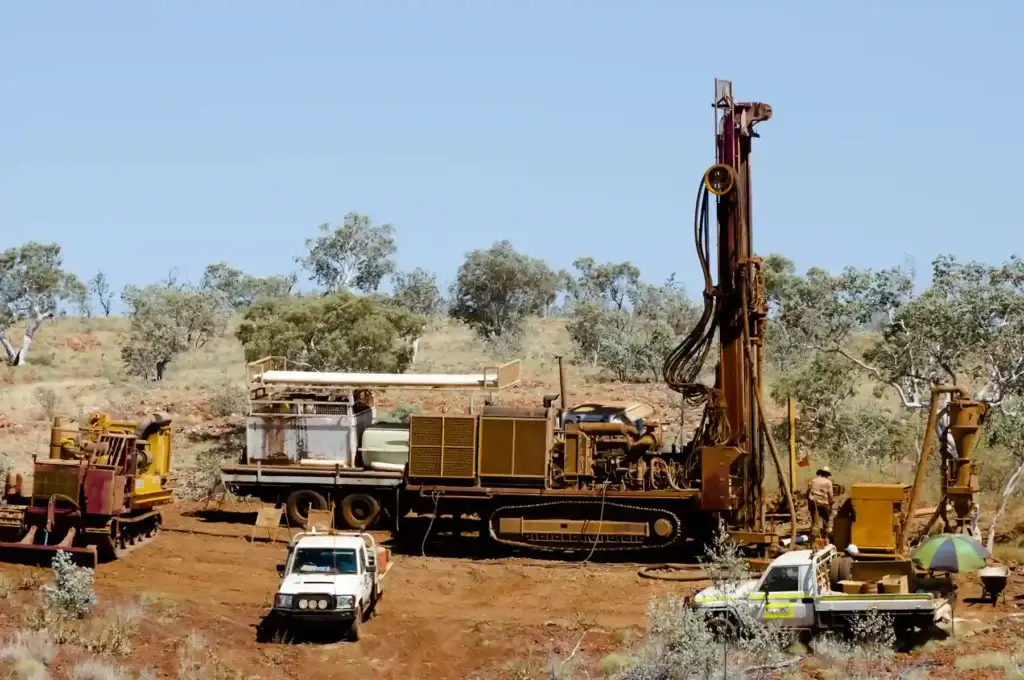There are many worthwhile benefits to drilling for a water well for your home. We…
If you are getting ready to have a water well drilled, you may have questions about the depth of the well. What depth is required to get a well that functions correctly, providing the quantity and quality of water you need? Well drilling needs to be done by professionals who have experience because the answer to this question is “it depends.” The water well contractor cannot tell you exactly how deep to go to get water or even predict the exact quality of the water that will be tapped. However, a skilled contractor can make reasonable judgments based on previous experience. So, you get more accurate predictions from a well-drilling company the more experience they have.
A well drilling company like A&T Well and Pump uses expertise, experience, and education to accurately determine how deep your well should be. Because the depth of the well can affect the price, it’s important to find a company with the skills to give you an accurate estimate before drilling begins. A&T Well and Pump has the experience you need which to accurately predict the depth to drill your well. In this article, we explain several factors that contribute to how deep your water well should be drilled, as well as the differences between a deep and regular well.
Typical Depth of a Water Well
The typical depth of a residential well ranges from 100 feet to 800 feet deep. Some wells are even 1,000 feet or deeper. The deeper a well is, generally the better the water quality. The average well depth in your location depends on factors such as:
- Geology
- Water Quality and Quantity
- Water Table
- Risk of Contaminants
What is a Deep Well vs. a Regular Well?
When talking about the depth of a well, it’s important to know the distinction between a deep well versus a regular well.
Deep Wells
Deep wells reach substantial depths below the Earth’s surface to access water reserves. Typically, a trenching contractor will drill them or they will be dug to tap into aquifers or underground water tables that are buried at an exceptional depth. They extend well below the water table to ensure a consistent and reliable water supply.
How Far Down is the Average Deep Well?
Deep wells can be anywhere from 100 to 1,000 feet deep to access water reserves. If you need a deep well, factors like water table levels, water quality, and the intended use of the water source are all considered to determine the proper depth.
The average well depth of a deep well is at least 100 feet, with most wells falling into the 100 to 500 feet range. Greater well depth may be needed due to the lack of a reliable water source closer to the property’s surface.
Regular Wells
A regular, or shallow well, does not go as deep because it taps into water sources that are relatively close to the Earth’s surface. Shallow wells are typically made to access water tables that are usually at depths of less than 100 feet. The average well depth for a shallow well is between 25 and 50 feet.
The exact depth of a shallow well can depend on:
- Local water characteristics
- Water table fluctuations
- Location
Because they are not as deep and don’t require as much labor to install, they are more cost-effective than deep wells. Water quality testing and maintenance are important to ensure the safety of water from shallow wells.
Another difference between regular and deep wells is the casing that is used. The larger the diameter of the casing, the better the water flow. Deep wells use casing that is at least two inches in diameter compared to shallow wells that use casing of 1 ¼ inch piping. In some cases, shallow wells may have wider diameters.
What is the Function of a Deep Well?
Because deep wells can tap into groundwater at substantial depths below the Earth’s surface, they have a variety of uses. Deep wells are often used in areas where there is poor-quality groundwater or where groundwater is scarce.
Industrial Uses
Different industries typically use deep wells if they have processes that require a consistent and clean water supply. Farmers rely on deep wells to access water deep below the ground for their crops.
Municipal Water Supply
Much of the water that cities and towns use comes from deep wells.
Geothermal Heating and Cooling
Deep wells can also be used for geothermal heating and cooling systems that allow access to the Earth’s stable temperatures for energy efficiency.
Construction of a Basic Well
A typical household well is about six inches in diameter and uses a six-inch casing or liner, which extends about 12 inches above the surface. Then, a casing pipe is installed down the shaft to the bottom of the well to keep out surface water, sand, and other contaminants.
Well construction usually takes about two days to complete. The first day is spent drilling and the second day is the casing pipe and submersible pump installation.
The Geology of Your Property
The quality and quantity of water from your well depends upon the geology and hydrology of the land in which it lies. Well water comes from underground aquifers that exist throughout the ground at different depths. An aquifer is a pocket of water within the bedrock. A well-drilling contractor uses science and educated presumption in determining how deep to drill to gain access to a sufficient supply of water in the aquifers.
The location of your well is crucial in providing a high-quality and sufficient quantity of water. It’s best to work with a well drilling contractor like A&T who knows the hydrology and geology of your area. They will know the best place to dig and also how to size the system correctly. A local contractor will also know the codes and regulations for your location.

Do Deeper Wells Mean Better Water Quality?
Generally, the quality of your well water improves the deeper the drilling goes because minerals become richer. Over the course of the year, the water table rises and falls depending on the amount of rain and how the groundwater supply is being used. Therefore, the depth of the well needs to be such that it accommodates the times of the year when the water table is at its lowest level. An experienced and knowledgeable contractor will know about the water levels and climate conditions in your area.
Potential contaminants may take longer to reach the water in a deep well, which means better water quality as well. But, deeper wells can increase the risk of having harder water, if it contains naturally occurring minerals. If you notice more minerals in your water, a water softener can easily fix the problem.
Accessing water from a deeper well typically results in a plentiful water supply. Deep wells are not affected by drought or water supply issues because their depth typically extends beneath receding water levels. These types of problems are more likely with shallow wells.
Yields can be increased, if needed, by fracturing the bedrock surrounding the well shaft. This process is known as hydrofracking. By pumping large quantities of water deep underground using high pressure, additional fissures in the bedrock are exposed providing access to additional clean water.
Risk of Contaminants
Wells are equipped with components that filter out debris and prevent bacterial contamination so you have healthy, clean water for you and your family. However, wells can still get contaminated. The deeper your well is, the lower the risk of contamination. Any bacteria that get into the well have a longer way to travel into your home and are more likely to die or get trapped along the way.
FAQ About Water Well Water Depth
Why is Well Depth So Important?
Well depth is an important factor because it can impact the quality and quantity of the water pumped from a well.
What Other Factors Impact the Depth of a Well?
The presence and type of surface contamination can determine the depth of the well because the well must be deep enough to avoid contamination.
Can a Deep Well Run Out of Water?
While wells can certainly run dry permanently, it is very uncommon. Aquifers can recharge with more precipitation and fewer pumps pulling water out of the aquifer to replenish the water supply.
How Old is Water in a Deep Well?
It is not uncommon for water to be some thousand years old in a deep well. It can be millions, and sometimes even billions of years old. The age of groundwater can be detected by Carbon-14 decay or by measuring known contamination.
Is Water from a Deep Well Safe to Drink?
Most groundwater is safe to drink, but it should be tested periodically. Groundwater that fills wells can sometimes become contaminated. The team at A&T Well and Pump provides water testing and treatment services so that you can feel confident that your water is safe to use.
Contact Us to Drill Your Well
A&T Well and Pump are experts in drilling wells. Our experience and knowledge enable us to provide you with educated determinations for the depth of your well. Call us at (919) 291-4063 or complete the form below to get a quote from our licensed water well pump professionals.

